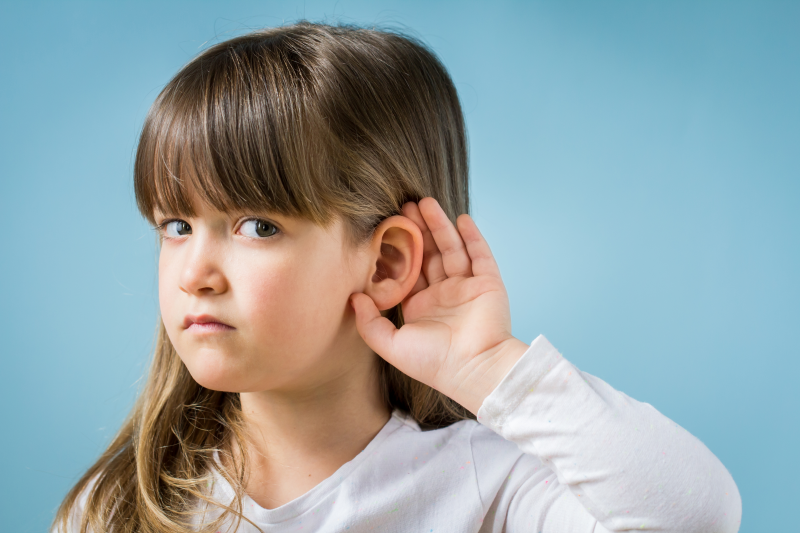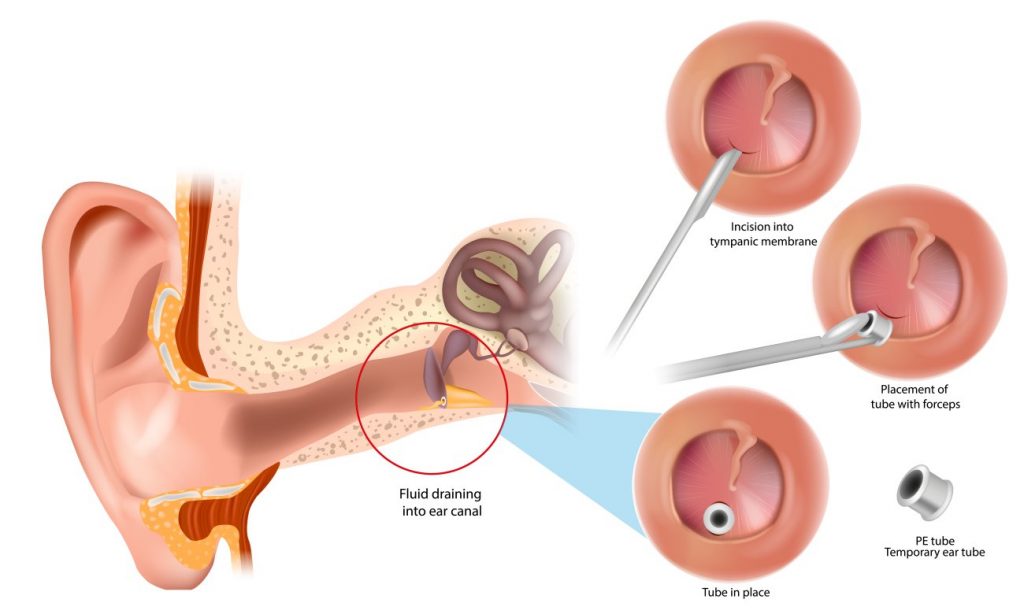Glue ear is the presence of fluid behind the ear drum. It is a very common condition in children under the age of 6.
Why do children get glue ear?
- The eustachian tube connects our middle ear to the nose and equalises pressure in the ears.
- This tube does not function adequately in younger children, leading to a negative ear pressure that draws in fluid (glue).
- Large adenoids at the back of the nose can also hinder the function of this tube.
Why is glue ear a problem?
- Glue ear causes hearing loss in children (the severity of this is similar to putting your fingers in your ears).
- This can lead to speech and language delay, poor listening skills and affect educational progress.
How is glue ear diagnosed?
- Examination of your child.
- Hearing tests and pressure tests to check for fluid behind the ear drum.
How is glue ear treated?
- Most children will clear the glue on their own over a period of 3-6 months.
- Children are usually monitored during this period with repeat hearing tests.
- In this surveillance period the Otoventâ device can be used to improve your child’s eustachian tube function. This is a balloon that your child blows up with their nose twice a day. The video demonstrates this.
- In children with persistent glue and hearing loss and speech delay the options include a hearing aid or surgery (insertion of grommets).
- In children with evidence of large adenoids (nasal blockage/ frequent upper respiratory infections), an adenoidectomy can also be beneficial.
What are grommets?
- Grommets are small plastic tubes that are inserted into your child’s ear drum.
- Grommets improve the function of the middle ear.
- Grommets remain in the ear for 12 months after which they fall out on their own.


Why are grommets beneficial?
- The procedure removes glue, improves middle ear function and allows your child to hear normally.
- Children’s hearing usually improves soon after the procedure.
- Grommets also reduce the number and severity of ear infections.
How are grommets performed?
Grommets are a quick and straightforward day case procedure involving a general anaesthetic. Recovery is usually painless and children can return to school within a few days.
What are the risks of grommets?
Overall, grommets are a very safe and short procedure. The risks are as follows:
- Infection (usually precipitated by water entering the ears).
- Persistent leaking from the ears (otorrhea) can occur in children with recurrent ear infections. This can be treated with short course of antibiotic ear drops.
- Occasionally the grommet falls out earlier than expected, however usually this causes no issues.
- Rarely grommets do not come out on their own and can cause recurrent infections in the long term and may need to be removed.
- A hole in the ear drum that does not heal (1% risk)- this can lead to infections and may require repair when the child is older
- Scarring of the ear drum (tympanosclerosis)- this does not usually cause any problems
What are the alternatives to grommets?
- Hearing aids
- A medium term course of a low dose antibiotic (for ear infections)
- Watch and wait approach to see if the glue clears
What is the after care and recovery post grommets?
- Recovery is quick and children can return to school soon after the procedure.
- We suggest a short course of ear drops to prevent the grommets becoming blocked in the first few days.
Can my child swim or wash their hair with grommets?
- I usually suggest that children avoid swimming for the first 2 weeks following grommet insertion to allow the ear drum to heal.
- In this period it is also useful to minimise hair washing and use ear plugs or cotton balls soaked with Vaseline in the ear during baths.
- After this period, swimming usually causes no problems.
- Use of a moulded ear plug with a swimming cap can be considered if there is concern regarding ear infections.
- Diving should be avoided as it is associated with a higher pressure and thus may lead to water being forced in to the middle ear and subsequent infections with grommets.
- If your child has any pain, ear discharge or fevers then we suggest seeing your GP or emergency doctor as antibiotic drops may be required.

